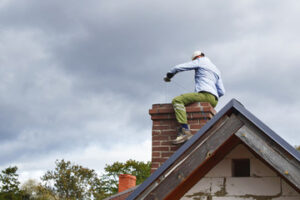Different Levels of Chimney Inspection
If you are considering selling your home, it’s a good idea to hire Chimney Inspection Charleston SC to ensure that your chimney is functioning. There are several different levels of inspections available, and you should find one that suits your needs. Level two chimney inspections include video scanning of the interior surfaces of the chimney. They are especially important if you have recently changed the type of fuel used or the shape or material of the flue.
A Level 2 chimney inspection is more extensive than a Level 1 inspection. It is recommended when the Level 1 inspection indicates that there may be a hidden hazard. It covers all aspects of the chimney, including its structure and flue. In addition, it involves the removal of any permanently attached parts of the chimney.
This type of inspection costs between $500 and $5,000. It is typically performed on chimneys that have structural damage. The price varies according to the difficulty of the inspection, with some chimneys requiring walls to be removed to access damaged parts.
A Level 3 chimney inspection is a comprehensive evaluation of a home’s chimney system. A technician will check the basic openings around the mantle, as well as the harder-to-reach spots. They will also check for signs of wear and tear. Using a video camera, they will assess the internal and exterior joints of the chimney. This level of inspection is required for homes that have suffered severe damage to the chimney system.
This level of inspection will also look for signs of severe blockage, creosote buildup, and damage to the liner. This type of inspection is most important for wood-burning fireplaces, but it’s also a good idea to get your chimney checked if you have other types of fuel.
A Level IV chimney inspection is a comprehensive examination of a chimney. It covers all aspects of the first two levels, plus examining areas that cannot be reached by a layperson. It also includes scanning the flue with an industry-approved method. The inspection is based on the National Fire Protection Association 211 Inspection Standards. These standards are recognized as “The Industry Standards” by the Fireplace and Ventilation Industry.
A Level II chimney inspection should be performed when you buy a home or transfer ownership. A recently-purchased home may not have undergone any inspection, and you could discover that the chimney is filled with creosote or debris. This can lead to hidden damage and fires. Having a chimney inspected will prevent future problems and damage. If you don’t, your homeowner’s insurance will probably not cover your repair costs.
There are several things that are covered in a Level V chimney inspection, including the inspection of the flue liners and the clearances from combustibles. The inspection should cover all accessible portions of the chimney, including the exterior and interior. Performing this type of inspection does not require the use of special tools or demolition equipment.
A Level Two chimney inspection is more comprehensive than a Level One inspection and may also involve a video camera inspection of the interior flues and joints. This inspection is often required if you are planning to change your chimney system, make a move, or sell your house.
A Level II chimney inspection is necessary if there have been any changes to the system or appliances that are connected to the chimney, if the input rating or efficiency of these components has changed, or if a weather event has occurred. In many instances, a Level II inspection is also required following a building or chimney fire.
If you are selling or transferring ownership of your home, you may want to have a Level II chimney inspection performed. A newly purchased home may not have been inspected, so you may find that the chimney is covered in creosote and debris, and there may be hidden damage that’s hard to detect. Having a chimney inspection performed is vital to preventing future chimney fires and identifying existing vulnerabilities. If you fail to have a chimney inspection, your insurance company may not cover the costs of future repairs.
